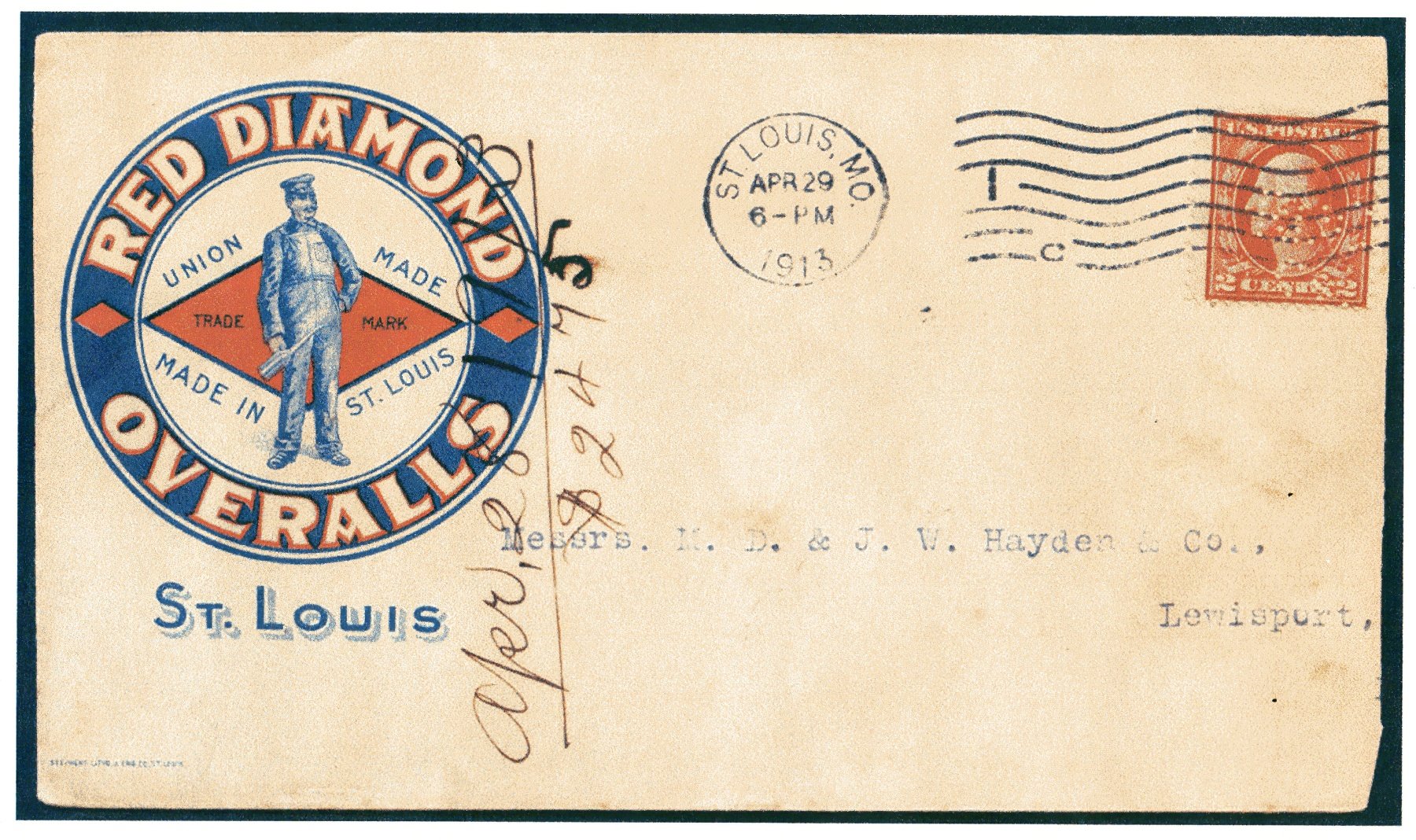Hats, Shoes and Overalls
Hats and shoes have always been staples of the St. Louis economy. Indeed, the old expression about the St. Louis Browns was, “First in shoes, first in booze, and last in the American League.” What is now The Washington Avenue Historic District, commonly called “the Loft District”—an area bounded by Delmar Avenue to the north, Locust Street to the south, 8th Street on the east and 18th Street on the west—was once known as the Garment District. According to the civic organization Downtown St. Louis, “From the late 19th century until the end of World War II, the St. Louis Garment District was second only to New York as an American center for fashion design and clothing manufacturing.” Today, most of the historic warehouses and commercial buildings along Washington Avenue—large multistory edifices of brick and stone construction with names like The Knickerbocker, Bee Hat, and International Shoe—have been renovated into contemporary lofts, bars and restaurants, and retail shops. Yet, evidence of these former shops, warehouses and factories, in the form of signage, still remains.
King Bee Hats / Wrigley’s Spearmint Pepsin Gum
1709 Washington Avenue – Loft District 2011
Photo: Robert “Ferd” Frank
Likely the largest existing wall sign in St. Louis, this beauty sits on the west side of what was originally the King-Brinsmade Mercantile Company and is now the King Bee Lofts. Several fading ads adorn the vast brick face, some of them partially overlapping others, having been painted at different times. From top to bottom,ad copy reads “King Bee Hats – King-Brinsmade Merc. Co.” “Wrigley’s Spearmint Pepsin Gum – Trade Mark Registered – The Flavor Lasts” and, within the pointing arrow, “Buettner’s – Seventh and Washington – Home Furnishings – Arrow Stamps.” To the right of Buettner’s is a barely legible ad for “Anti-Kamnia Tablets – Ask For A-K Tablets.” For chronological reference, the Anti-Kamnia Chemical Company made its appearance around 1890 in St. Louis. The trademark was registered that year, but the codeine-laced medicine for treating “Worry” [nervousness] was never patented. The company marketed its product aggressively, sending advertising postcards and samples to doctors and other possible customers. During the 1904 World’s Fair in St. Louis Anti-Kamnia was still going strong, but was to virtually collapse with the passage of the Pure Food and Drugs Bill of 1906.
Hats 49 Cents
North St. Louis 1987
Found on the side of a home on a quiet side street, here is an example where the picture overwhelms the ad copy. It looks to be a fedora and whenever it was that a decent [we hope] hat cost 49 cents is when this sign dates to.
Allen Market Lane Apartments / Brown’s Five Star Mark
12th and Russell – Soulard
Wow! Shoes and hats made in the same building, but at different times. Known affectionately as the Mexican Hat Factory due to the sombreros made by the International Hat Factory in the 1950s, this four-story brick building was built in 1904 to house a division of the Brown Shoe Co. Purchased in 1980 by developers McCormack Baron Salazar, the old factory was converted to more than 100 affordable apartments available to seniors. This sign, and another one identical to it, were commissioned by Brown Shoe and probably date to a time before 1910.
Red Diamond Overalls
Lemp at Crittenden – Benton Park 1986
I photographed this sign in the 1980s and again 30 years later when the Knopf Market was long gone. It is a double ad, one for Red Diamond Overalls, once made here in St. Louis, and whose delightful slogan was “The Man who wears Red Diamonds wears a smile that won’t come off.” The other sign lettered on this wall, and taking up far less space, says only “Lemp Leader Sells.” I can find nothing on this product, and even Vincent Hromadka, grocer-owner at nearby Vincent’s Market for the last 50 years, hadn’t heard of it. The building sits on the corner of Lemp and Crittenden, not far from the former Lemp Brewery, so it could be a variety of beer. Or maybe not.
Red Diamond Overalls Advertising Cover
Handsome advertising cover postmarked April 29, 1913 when a stamp was but 2 cents.
Cobbler Shop
Cherokee Row South St. Louis 2011
Vestige of an old sign on the brick face of what is now a photography studio. On the other side of the door a similar sign reads “Shoe Repairing While U Wait.”





